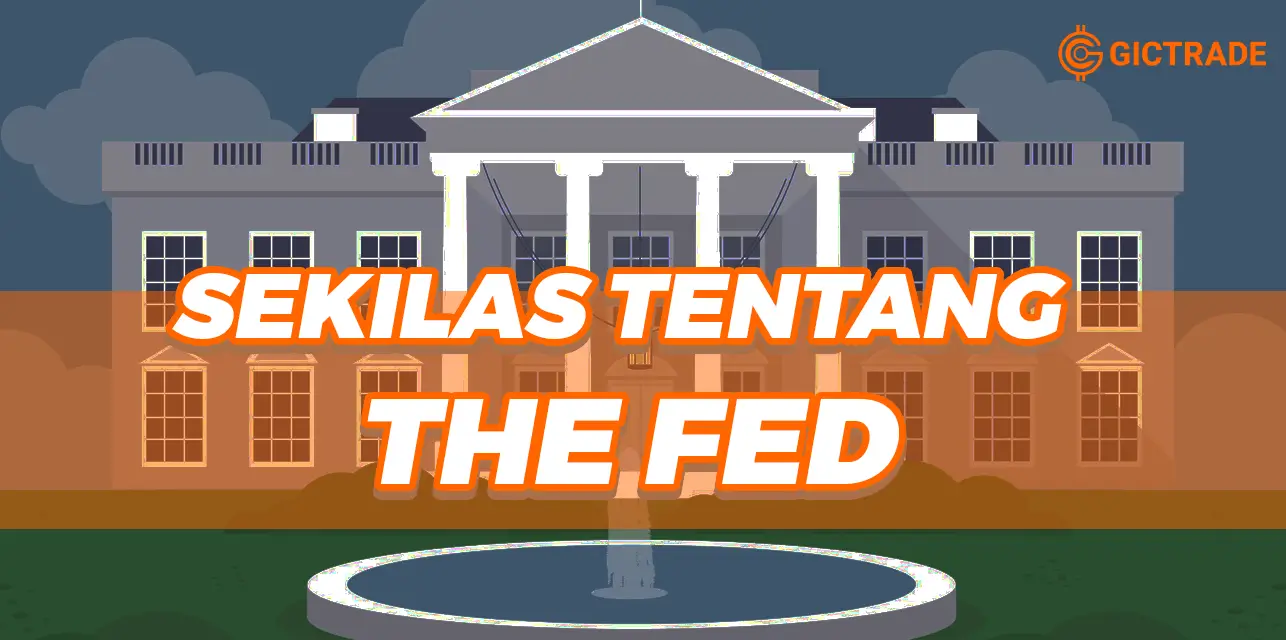What is The Fed?
The U.S. central banking system—the Federal Reserve, or The Fed—is the most powerful economic institution in the United States, perhaps in the world. Its core responsibilities include setting interest rates, managing the money supply, and regulating financial markets. It also acts as a lender of last resort during periods of economic crisis, as demonstrated during the 2008 financial crisis and the COVID-19 pandemic. As the U.S. economy recovers, concerns about high inflation have refocused attention on the central bank. Given the magnitude of its power, the Fed is no stranger to controversy.Some economists argue that its aggressive policy is risky against inflation and asset bubbles, while others feel the Fed's support for financial markets benefits big business more than workers. The central bank is also one of the most politically independent bodies of the U.S. government, which has long caused tensions with lawmakers and presidents, including President Donald Trump.
History and Development of The Federal
Before the Federal Reserve was established, the country was hit by a financial crisis. Sometimes, these crises cause "panic" where people race to the banks to withdraw their savings. The failure of one bank often creates a domino effect, where customers of other banks rush to withdraw funds from their own banks even though the bank is not in danger of failing. Banks need emergency reserves to prevent panic and consequently make them go out of business.What led to the formation of the Federal Reserve? A very severe panic in 1907 resulted in bank runs that wreaked havoc on the fragile banking system and eventually led Congress in 1913 to write the Federal Reserve Act. The Federal Reserve System was originally created to address this banking panic. Now he is saddled with some broader responsibilities, including fostering a healthy banking system and a healthy economy.
Getting to Know the FOMC (Federal Open Market Committee) : Meeting Schedule and Influence on Forex
What is the Fed Duty?
The Federal Reserve System works to promote the effective operation of the U.S. economy and, more generally, to serve the public interest. The Fed's specific tasks have changed over time as banking and the economy have evolved.The Fed's Authority
Here are some of the authorities of the Fed. These authorities are:Community Development
The Federal Reserve advances oversight, community reinvestment, and research to improve understanding of the impact of financial services policies and practices on consumers and communities.Monetary policy
The Federal Reserve sets the US monetary policy to promote maximum employment and stable prices in the US economy.Financial System Stability
The Federal Reserve monitors financial system risks and engages at home and abroad to help ensure the system supports a healthy economy for U.S. households, communities, and businesses.Payment System
The Federal Reserve works to promote a safe, efficient, and accessible system for U.S. dollar transactions.Supervision and Regulation
The Federal Reserve promotes the safety and health of individual financial institutions and monitors their impact on the financial system as a whole.The Fed Structure
The Federal Reserve's central bank is a multi-layered financial body, which derives its authority and spirit from the Federal Reserve Act of 1913. Despite being an executive body, the financial body is largely independent of the control of the President or Congress and is described as being "independent in government." The Federal Reserve's four main axes of power include:- Board of Governors
- Federal Open Market Committee
- Twelve regional Federal Reserve banks, and
- Other member banks
What Makes the Fed Have Strong Power?
The mighty Federal Reserve. It is stronger than the inflated housing market, able to stop inflation in a single bond. And, if it slips, if it uses its superpowers unwisely, if it goes too far, it can push the economy into a recession with just the touch of its little finger. That is one way of looking at the country's central bank. Under outgoing Federal Reserve chairman Alan Greenspan, it has become the main road. The Fed is seen as the mediator of all things economic, the capital of Moneyland, with Greenspan as the ruler and the elusive genius of the population.With the chairman's seat at the central bank expected to be handed over to Ben Bernanke in January, it's time for a reality check. How strong is the Fed? The Fed has two missions, said Quincy Krosby, chief investment strategist at The Hartford, a Connecticut-based insurance company. Its main mandate is price stability, keeping inflation at bay. The secondary demand is to maintain a sustainable economic growth environment, which is defined as sustainable work. To achieve its mission, the Fed has two main tools: Regulating the money supply and raising or lowering short-term interest rates.
More money plus lower interest rates is a tool of an "accommodative" Fed, a Fed that tries to fuel economic growth. If the Fed lowers the country's money supply and raises interest rates, it will be tightening, trying to slow down the economy and prevent inflation. After 12 consecutive rate hikes, the short-term federal funds rate is at 4 percent, a four-year high, and Wall Street is watching the Fed with the attention that parents give to young children playing near the road. In a nutshell, the power of the Fed is:
- Wall Street is increasingly paying attention to the fact that the Fed continues to expand its price control and full-employment mandate.
- Over the past year, central banks have been controlling the climate and ensuring that job growth is evenly distributed across society.
- This new agenda strongly reflects the values espoused by former Fed chair and current Treasury Secretary Janet Yellen.
- "Since 2008, they have given up on so many areas, I don't even recognize the institution anymore. The bank I work for is no longer there," Fed veteran Christopher Whalen said.
- Fed officials emphasized their independence and insisted that they were not guided by political pressure.
The Fed Influence on the World Economy
When the Federal Reserve conducts monetary policy, it affects employment and inflation mainly through the use of its policy tools to influence the availability and cost of credit in the economy. The main tool the Federal Reserve uses to conduct monetary policy is the federal funds rate—the rate at which banks pay for overnight loans in the federal funds market. Changes in the federal funds rate affect other interest rates which in turn affect the cost of borrowing for households and businesses as well as broader financial conditions.For example, when interest rates fall, loans become cheaper, so households are more willing to buy goods and services, and businesses are in a better position to buy goods to grow their business, such as property and equipment. Businesses can also hire more workers, affecting employment. And stronger demand for goods and services could push wages and other costs higher, affecting inflation.
During an economic downturn, the Fed may lower the federal funds rate to the lower bound near zero. At such times, if additional support is desired, the Fed can use other tools to influence financial conditions in support of its goals. However, there are many factors that affect inflation and employment. And while the link of monetary policy to inflation and employment is indirect or direct, monetary policy is an important factor.

What Happens If the Fed Rates Rise?
When the Fed raises the federal funds target rate, the goal is to increase credit costs across the economy. Higher interest rates make loans more expensive for businesses and consumers, and everyone ends up spending more on interest payments. Those who are unable or unwilling to pay higher payments delay projects that involve financing. This simultaneously encourages people to save for higher interest payments.This reduces the money supply which tends to lower inflation and moderate economic activity—aka cooling the economy. Let's take a look at how this applies to a 1% increase in the Fed funds rate and how it can impact the lifetime cost of home mortgage loans. Take your family shopping for a 30-year, fixed-rate mortgage worth $300,000.
If the bank offered them an interest rate of 3.5%, the total cost of a lifetime mortgage would be about $485,000, with nearly $185,000 of that amount being interest expenses. The monthly payment will amount to around $1,340. Let's say the Fed has raised interest rates by 1% before families get loans, and the interest rate offered by banks for a $300,000 home mortgage loan rises to 4.5%.
Over the course of the 30-year loan, the family will pay a total of more than $547,000, with interest costs accounting for $247,000 of that amount. Their monthly mortgage payment will be around $1,520. In response to this increase, the family in this example might delay buying a home, or choose a home that requires a smaller mortgage, to minimize the amount of their monthly payments. This (very) simplified example shows how the Fed reduces the amount of money in the economy when it raises interest rates. In addition to mortgages, rising interest rates have an impact on the stock and bond markets, credit cards, personal loans, student loans, auto loans, and business loans.
 Last:
Last: 







